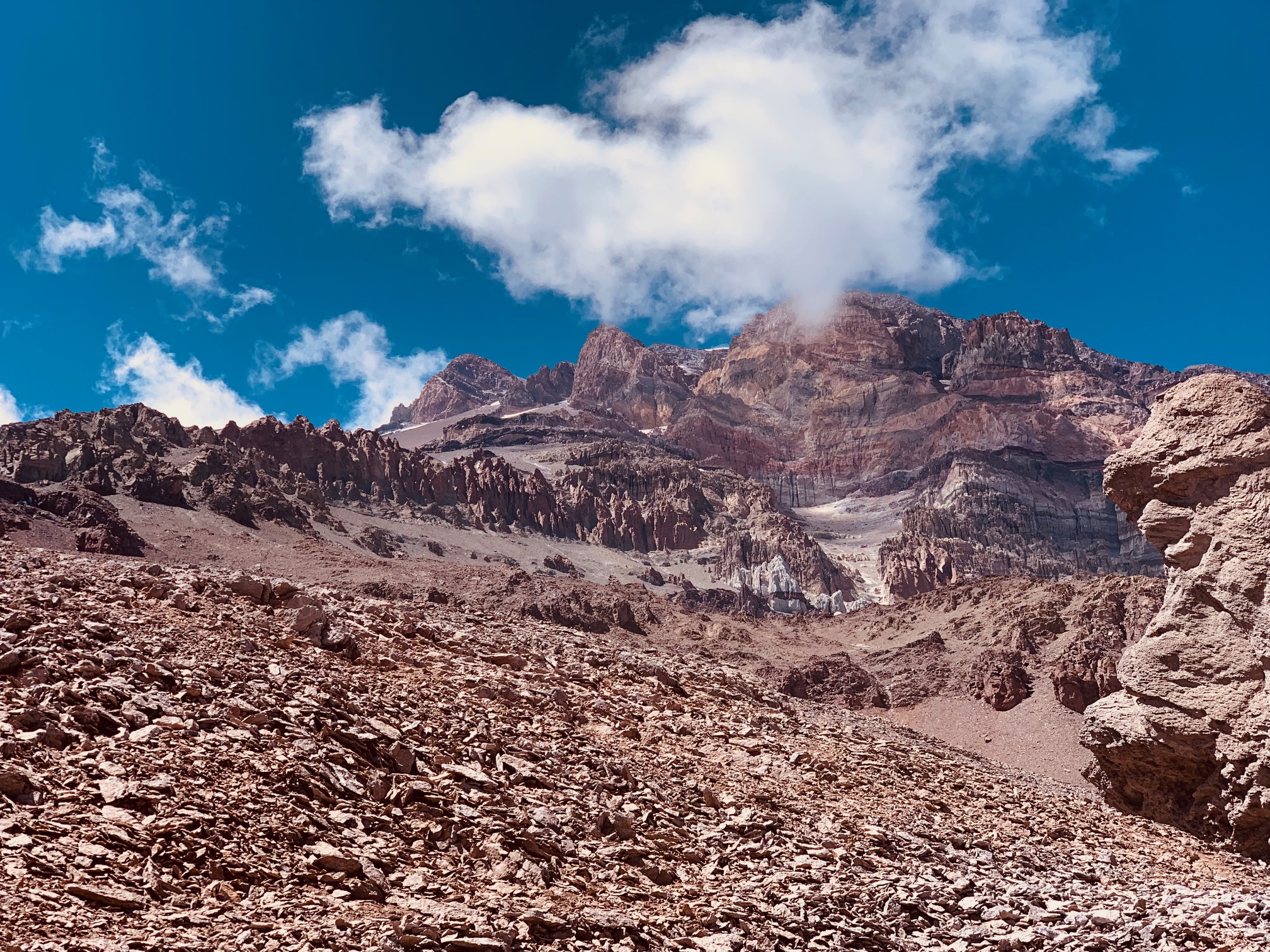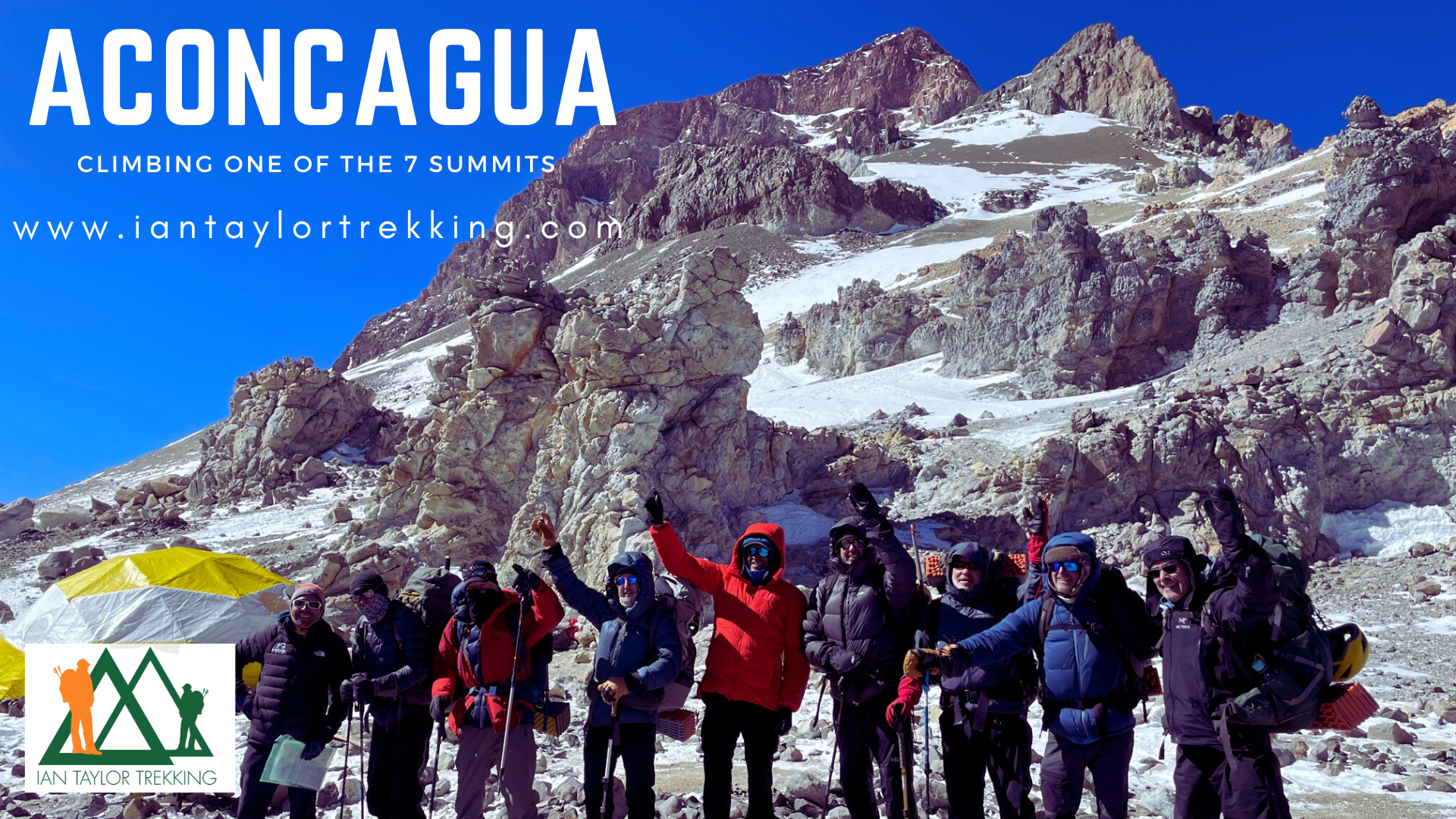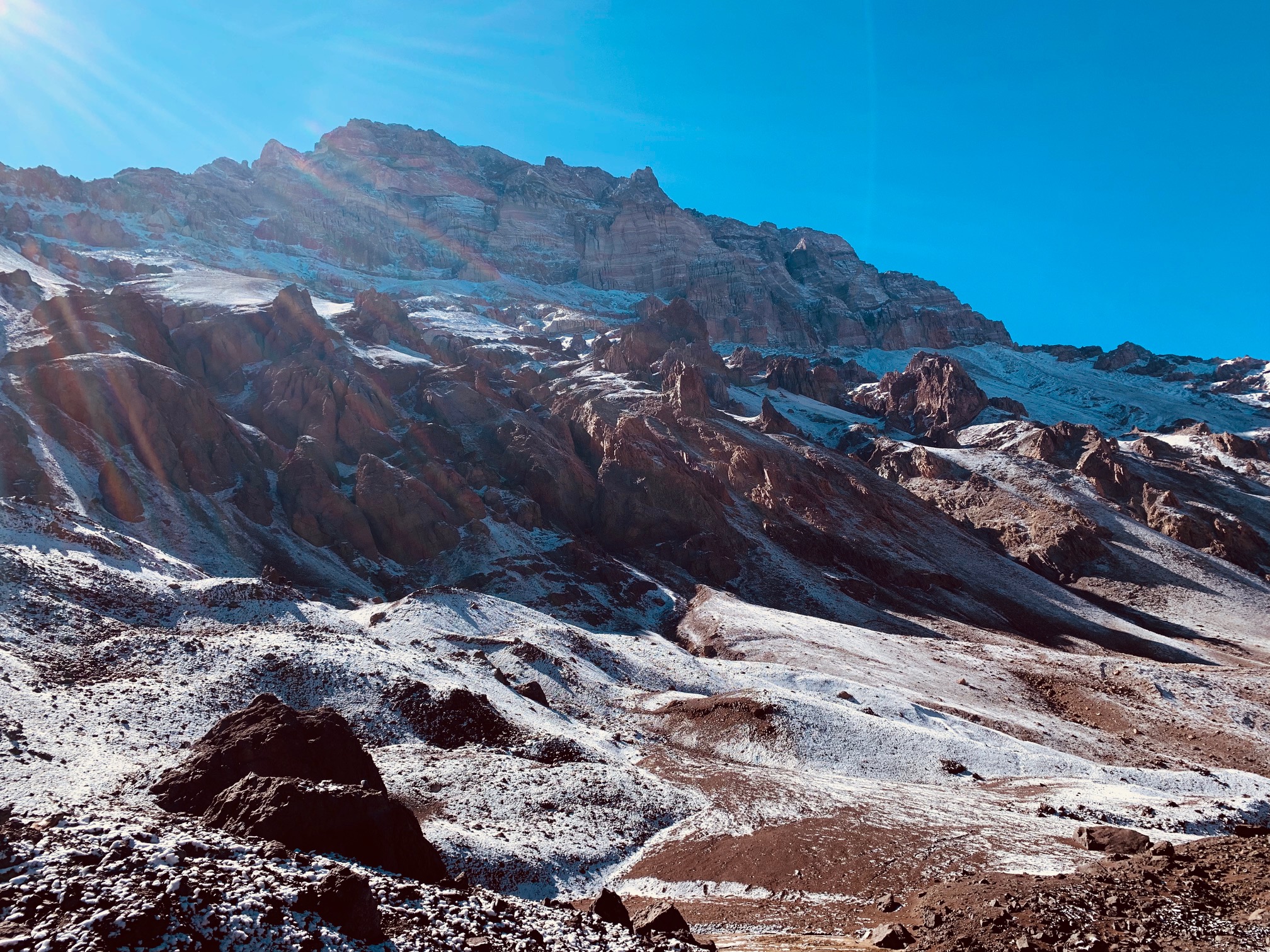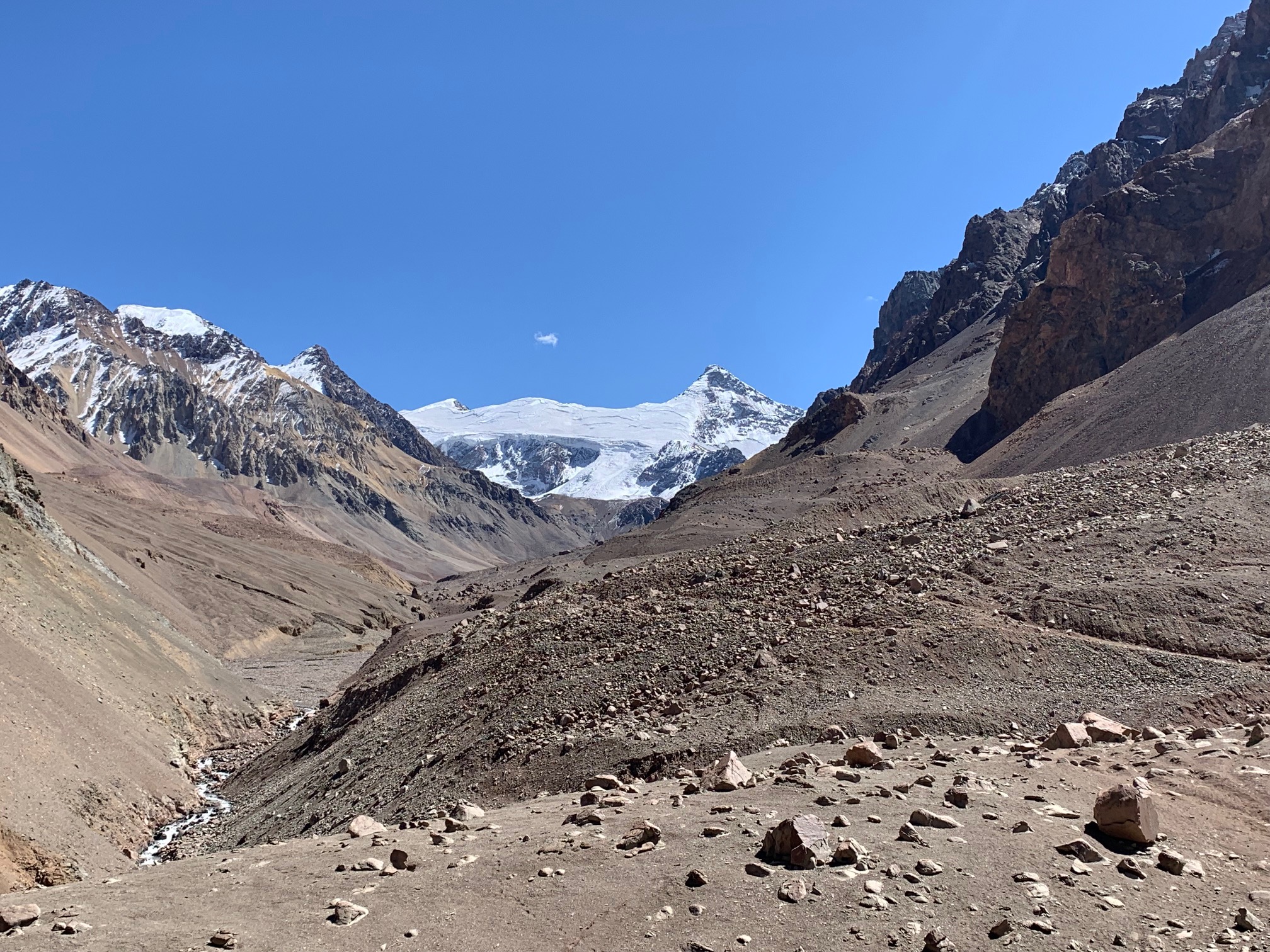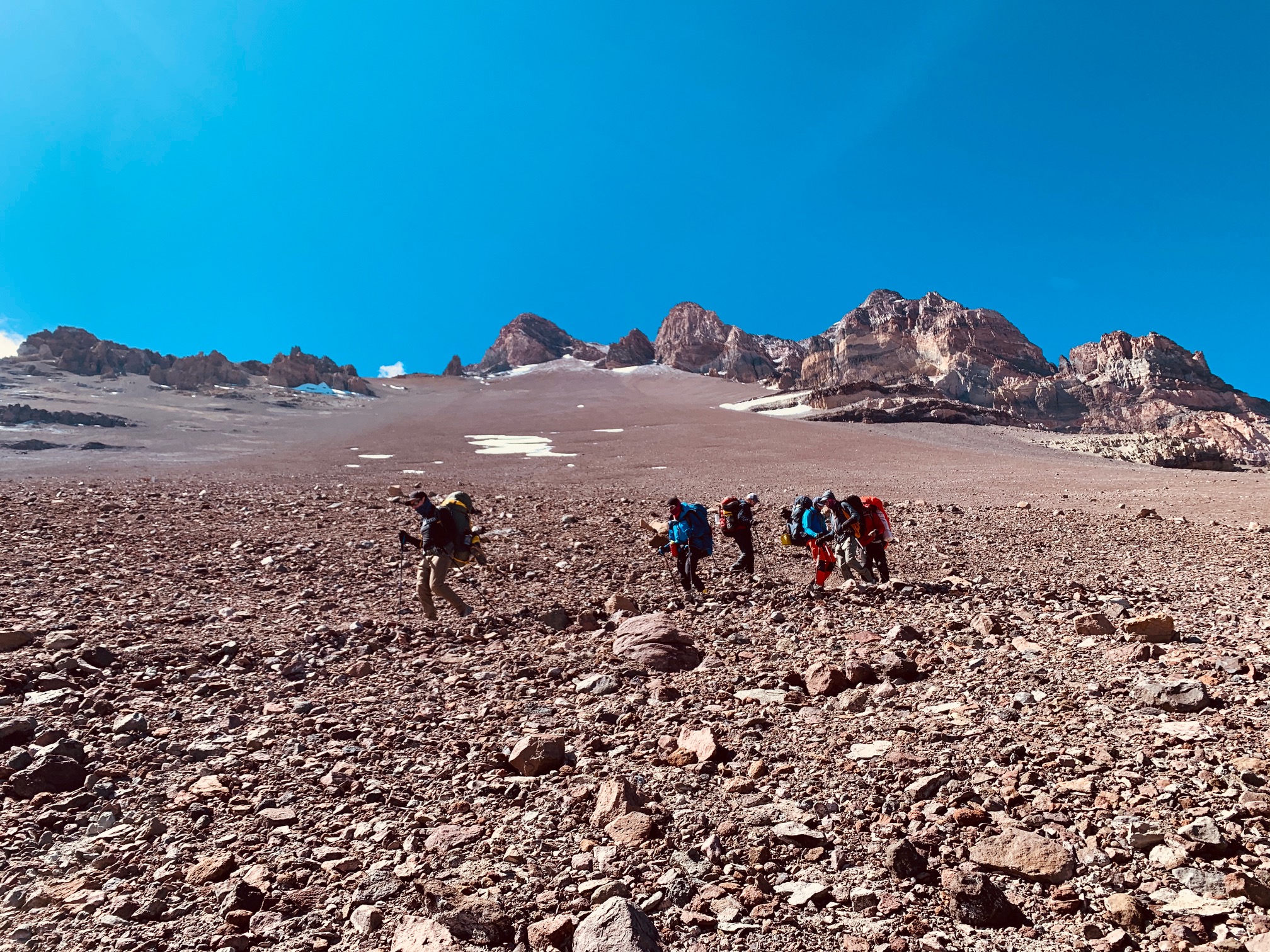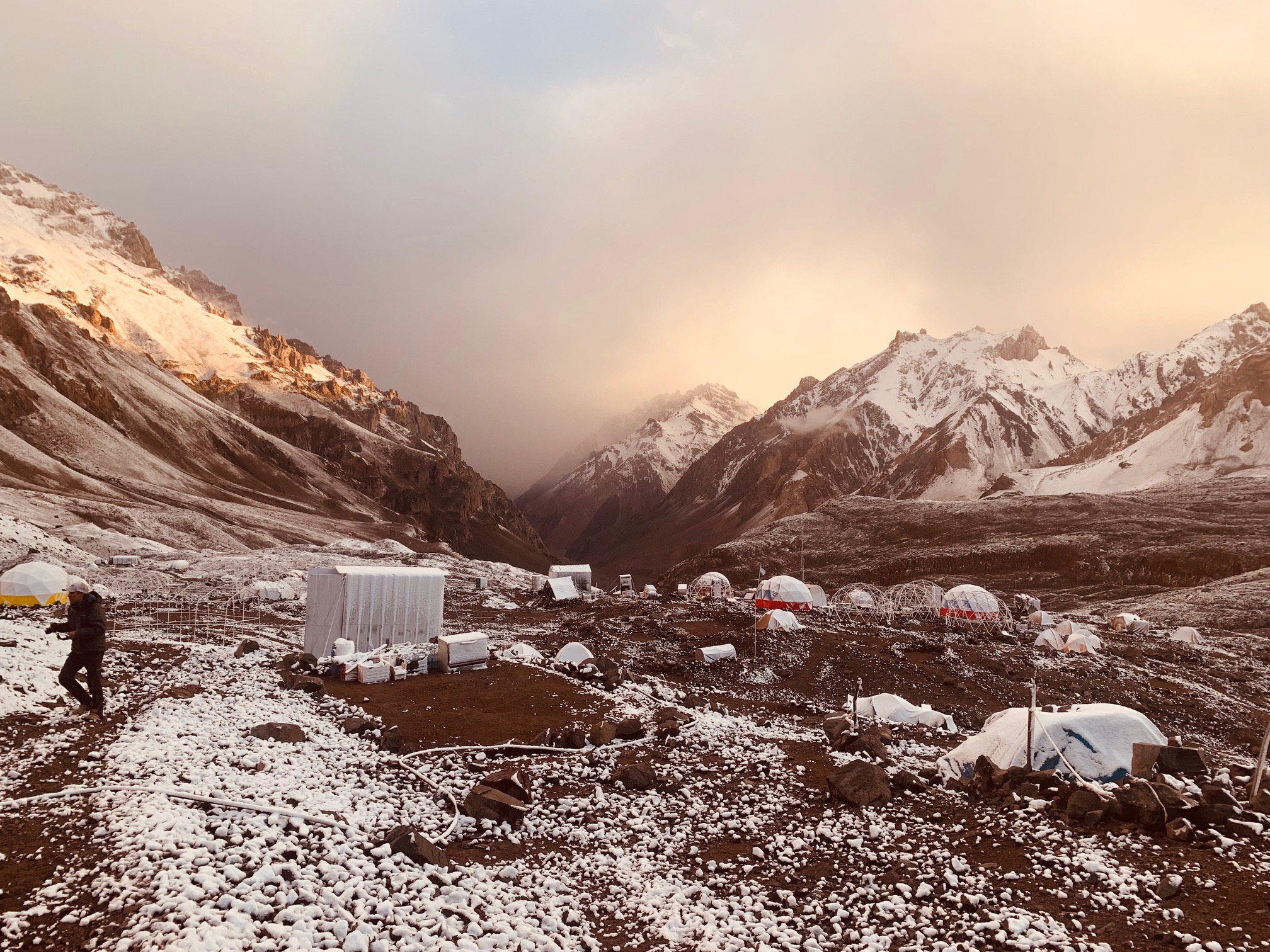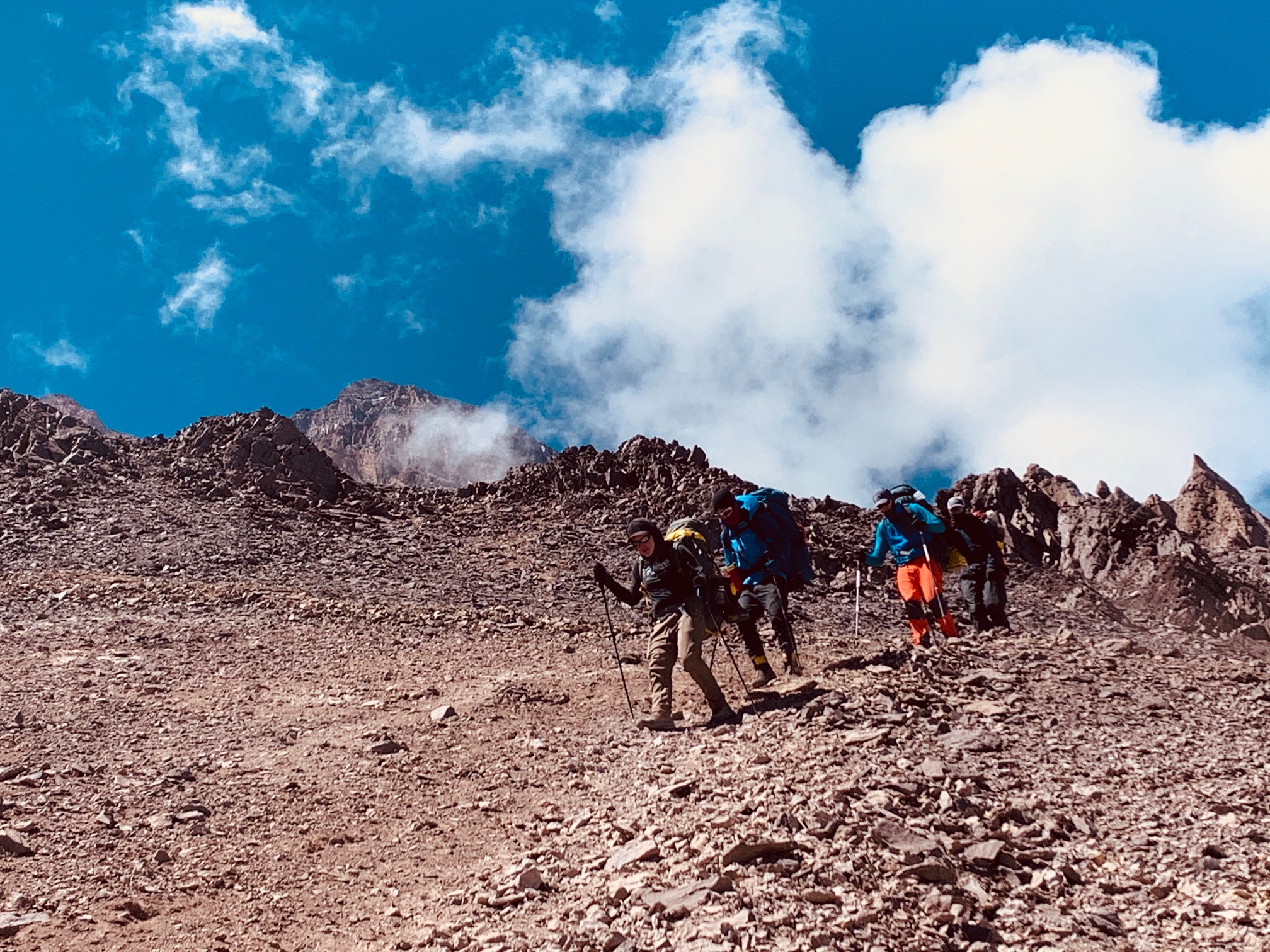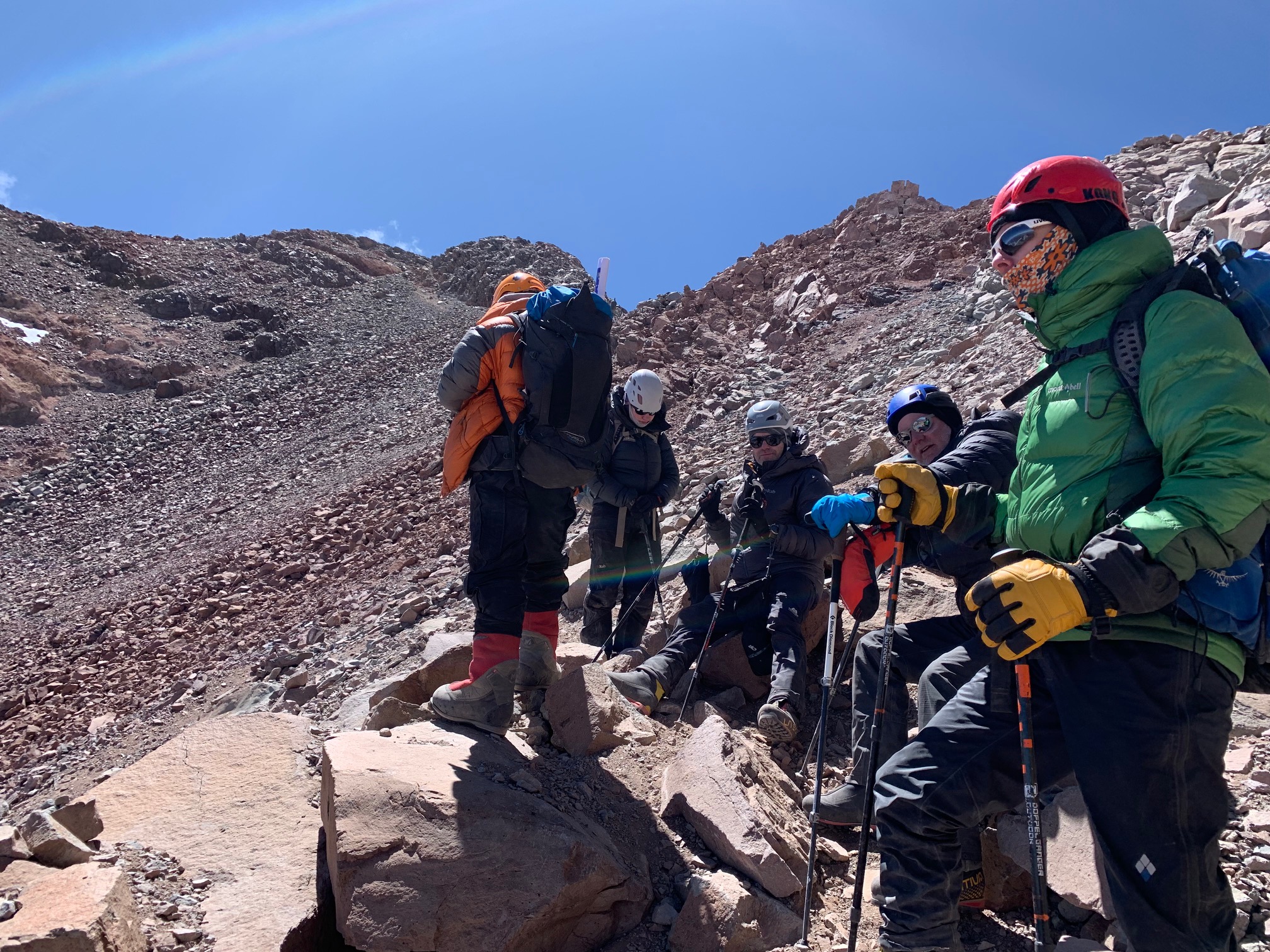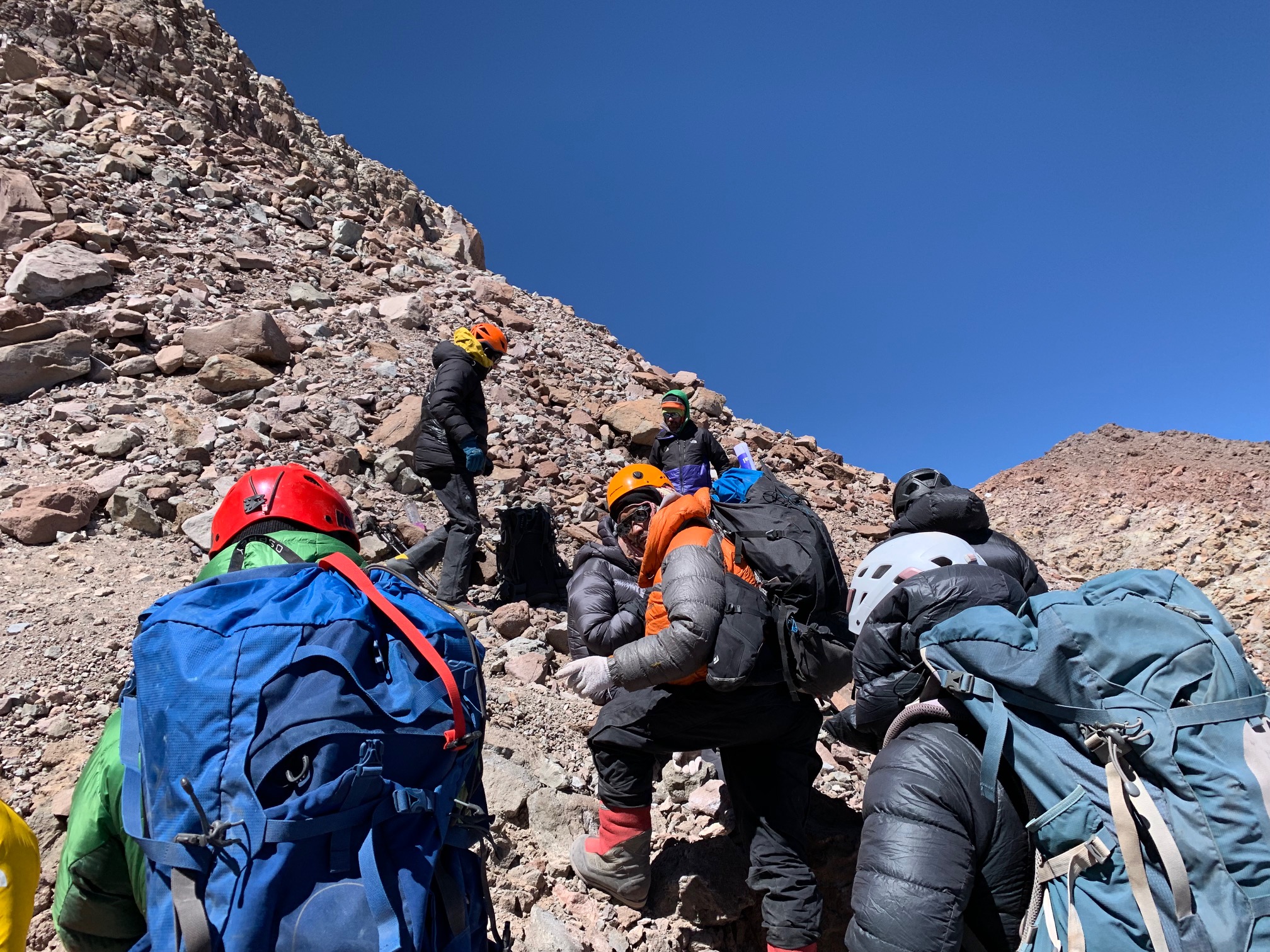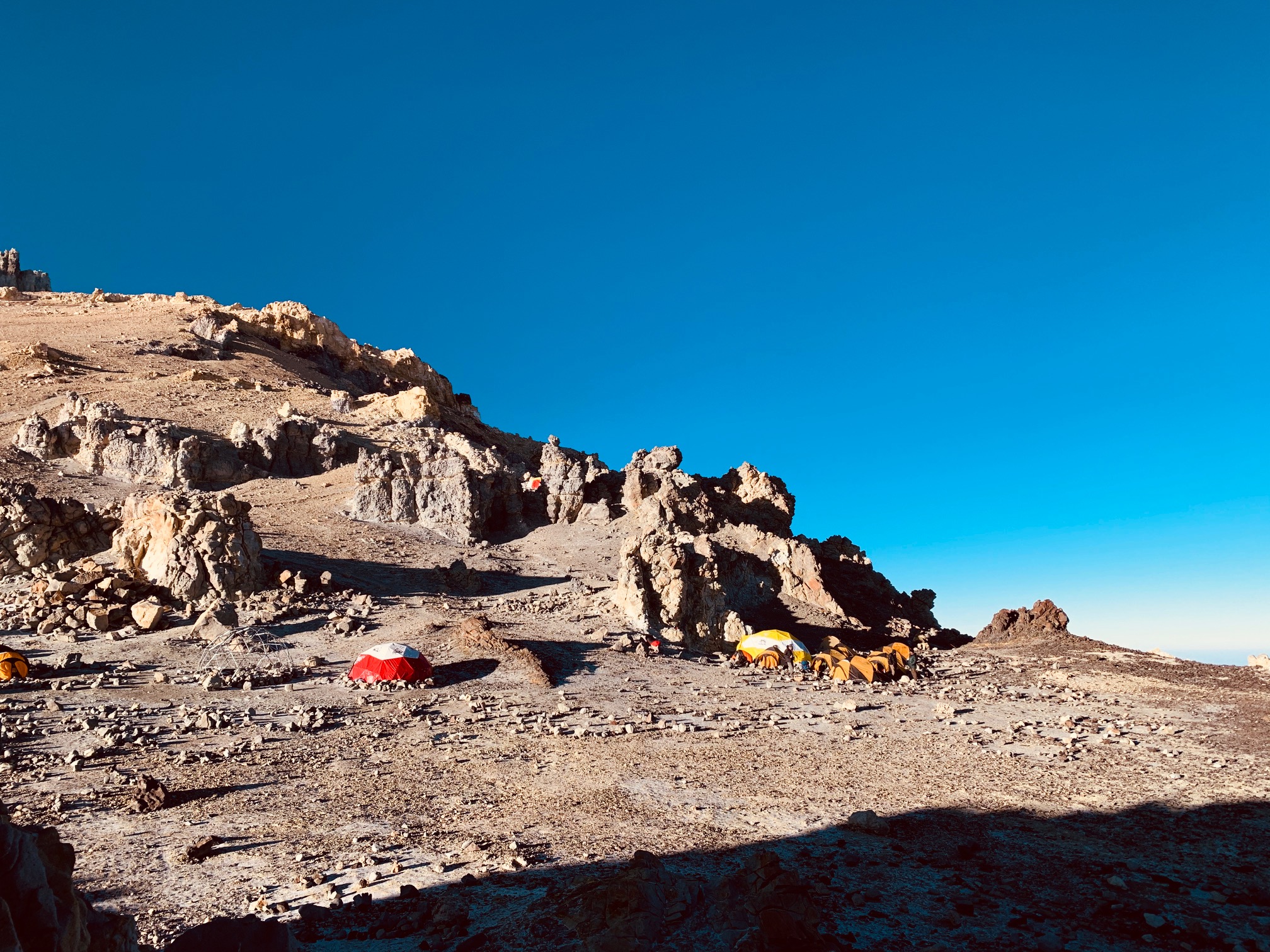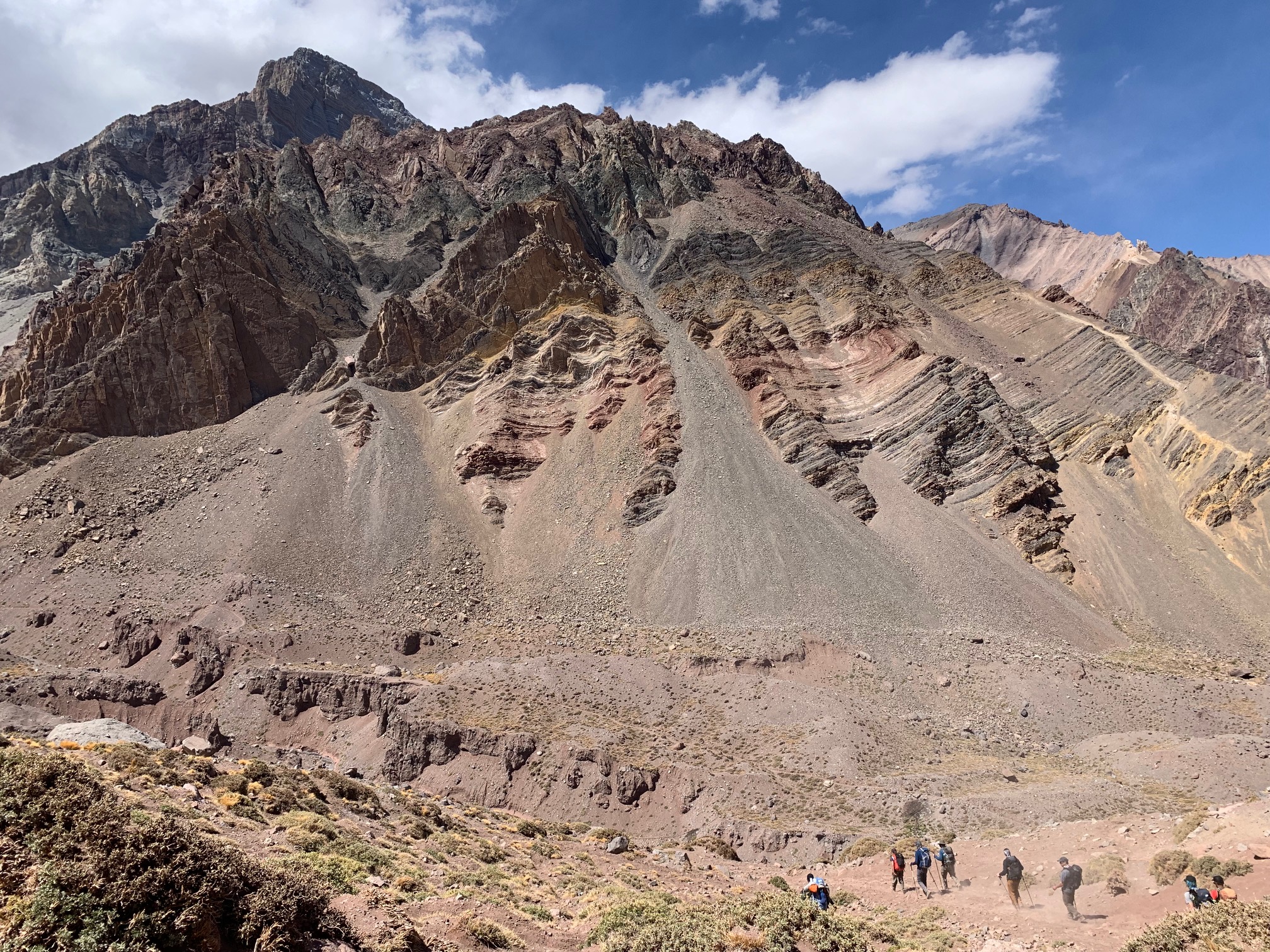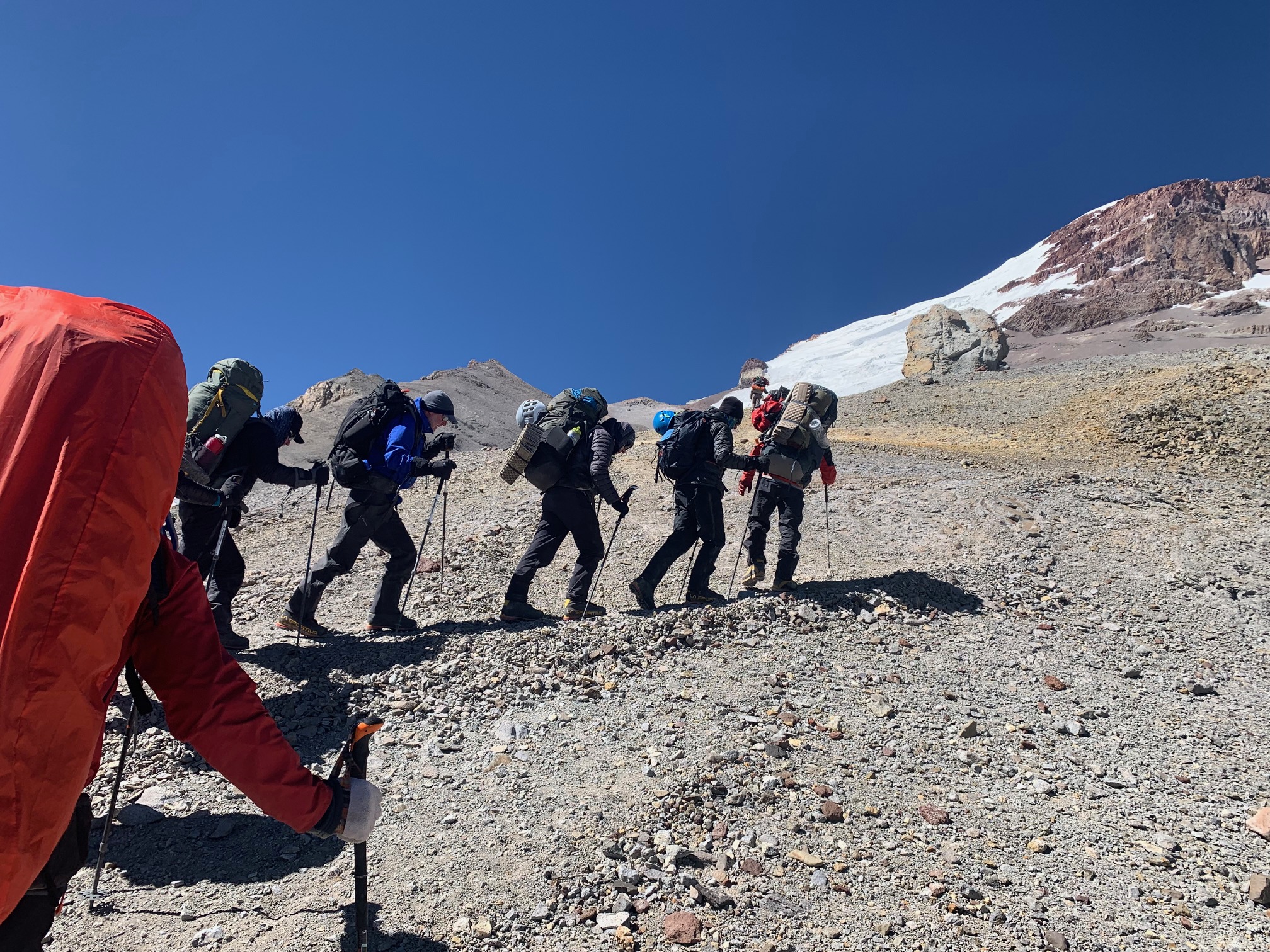Here are four important things to know about Climbing Aconcagua. We have learned a lot from climbing Aconcagua over the years. Below are the four most important things you need to consider before signing up to any Aconcagua Expedition. Check out our Aconcagua page and upcoming trips.
Aconcagua with Experts
I have been lucky enough to climb Mount Everest, Aconcagua 10+ times and we have led hundreds of people to the summit of Aconcagua. Get in touch today and learn more from our experience.
Four Important Things to know about Climbing Aconcagua
1). Acclimatization and Spare Days
Every expedition to high and extreme altitude needs specific acclimatization. Aconcagua also requires at least four days when you can make a summit attempt. On my last expedition we had to make a summit attempt a day early. The weather forecast was showing four days of bad weather during our planned summit attempt.
The first time I went to Aconcagua we were on the summit on day twelve. It was way to fast and it was a terrible experience. The guide was moving too fast and made for a terrible experience and lessons learned.
You need to take your time for your body to adjust to the low levels of oxygen. Acclimatization is everything on Aconcagua. As you go higher, the barometric pressure decreases, although the air still contains 21% oxygen, every breath contains less molecules of oxygen.
2). Physical Preparation
Aconcagua requires excellent physical preparation. We are available to help our clients understand the physical demands on climbing at high and extreme altitude. Learn more and get in touch with us directly as we can help you develop a training plans that will work for you.
From experience the best way to prepare will be hiking up and down hills building from 500m/ 1,640 feet to 1,500m/ 5,000 feet over the course of months.
Daily training sessions our a must in supporting your longer weekly training session or hike. You should consider using the Stairmaster and develop a weight training plan. Strength building and endurance will be your core training.
The Stairmaster carrying weight, building up to being comfortable carrying 20kg/ 44lbs will be important. You will need to carry different weights in different training sessions and we can help you develop this plan.
3). Weather
The weather on Aconcagua is unpredictable and challenging at the best of times. The success rate on Aconcagua is around 30% of people make the summit. There are many factors like lack of physical preparation, acclimatization but the weather, specifically high wind are the reason the success rate is so low.
Aconcagua is only 80 miles from the Pacific ocean, leading to extremely high winds and storms, similar to Denali in Alaska.
The wind chills can drop well below zero in Fahrenheit in the better climbing months. This is why you need more contingency days for your expedition.
4). Prior Altitude Experience
Having specific conditioning and altitude experience from years of high altitude trips will only help you on Aconcagua. If you are thinking of climbing Aconcagua we recommend going on a number of high altitude trips prior to signing up to an Aconcagua trip.
Learning more about how you respond to low oxygen environments is critical for your safety on this mountain. You need to have a range of high altitude experiences to aid in your safety as you venture into high and extreme altitude. Try and make sure you have a range of these trips under your belt, Everest Base Camp Trek, Kilimanjaro, Mount Elbrus, Island or Mera Peak, Cotopaxi or another high altitude peak above 5,000m/16,404 feet.
Everyone acclimatizes differently and it is important for you to understand how your body reacts in low oxygen environments. The more experience you have the better prepared you will be.
Other Important Information
We are big fans of the Vacas Valley traverse. There are advantages to trekking the normal route up Aconcagua. The hike into Base Camp on the normal route covers less distances than the Vacas route.
Base Camp on the normal route is Plaza de Mulas 4,390m/ 14,402 feet and a little high than Base Camp on the Vacas side at 4,200m/ 13,780 feet. This means you will have less elevation gain on the normal route up to Camp 3 at 6,000m/ 19,685 feet. You will also carry no group equipment on the Normal route.
When should you Climb Aconcagua
You have options for climbing Aconcagua. The best months will be November, through March. Aconcagua National Park opens on very specific dates in November and usually closed early March.
There is never an ideal weather window and you need more potential summit attempts built into your itinerary. However, the weather can be extremely cold and windy anytime.
The busiest time on Aconcagua is from mid December to mid January and there could be over 1,000 climbers on the mountain at this time. We like to avoid climbing at when there are too many people on the mountain.
How Hard is it to Climb Aconcagua
I am sure you may have read Aconcagua is just a high altitude trek. This maybe true if you are in peak fitness and everything goes your way on the day. I can tell you from a wide range of experiences that the weather can be challenge every day on this expedition.
You can experience intense heat, bitter cold, driving snow that create some of the harshest conditions you can experience on a mountain. High altitude, cold temperatures, rock fall and the risk of serious altitude sickness should temper anyone who things Aconcagua is a walk in the park.
Make sure you can set up your own tent, sleep in a tent, and managing tent life in challenging conditions.
Portage of All equipment
You will be carrying everything yourself above Base Camp. Mules carry all equipment and your duffel bag and Expedition backpack into Base Camp. There is an option for support higher on the mountain for an additional fee.
There are two options you can pay for a porter to carry 10kg of your personal gear or porter to carry up to 20kg of your personal gear and your portion of Expedition kit.
We have porters based in both base camps ready to help with load carry’s. It is always best to book this support well in advance.
How Dangerous is Aconcagua
Aconcagua can be dangerous if precautions are not taken. The route we take has some rock fall risk above Base Camp below camp 1. There is also the risk of rock fall below and in the Canaleta high on the mountain.
However, there are always deaths on Aconcagua each season. People getting caught out in storms, falling from fatigue, rock fall and high altitude related challenges will kill, if not managed correctly. The week before our last climb a lady died when she was struck by a rock high on the mountain.
There are a lot of rescues every season for altitude, frostbite and injured climbers. It is your responsibility to make sure you come in excellent physical condition and ready for all eventualities. However, it is the weather and altitude that makes Aconcagua dangerous.
Learn more about treatment for Altitude Sickness
Please familiarize yourself with AMS (Acute Mountain Sickness) and the challenges of going to high and extreme altitude. Did you know extreme altitude is above 5,500m/ 18,000 feet.
This means you need to take extreme care of yourself when moving above this elevation. If you have three symptoms of altitude sickness you should be going down not up. Learn more.
Gear and Equipment needed for Aconcagua
Having the correct gear and equipment is critical for safety and success. Think about using each piece of equipment well in advance of the Expedition. You will need to make sure you are used to camping.
The more experience backpacking, camping and living in harsh conditions the better. You need to be prepared for all of this well in advance. Bringing the correct gear and equipment can either make or break your expedition.
Make sure you have a lot of layers, double mountaineering boots extreme mitts and expedition grade equipment. I have witnessed a wide range of temperature on Aconcagua so best to come prepared and have tested all your gear and clothing. It has been -10 F/ – 23 Celsius inside my tent at Camp 3.
Summit Night on Aconcagua
The timing varies from group to group. A normal plan for summit night on Aconcagua is waking up at 3am and start preparing and getting hydrated. You will be served breakfast around 4am and leave by approximately 5am.
There is a lot of zig zagging for the first few hours. We plan on breaking every hour as we ascent. You should reach Independencia by 8am for a break. After a zip zag ascent you will top out on a ridge and you will see the traverse across to the cave.
You should be hiking across the traverse by 9am and you should reach the cave at 10:30am. Depending on the weather and temperatures you may have 10 minutes or longer to rest at this point.
From the cave through the Canaleta to the summit takes about two hours with a number of rest stops. This can be a eight+ hour ascent. It will take 3 to 4 hours to make our way all the way back to Camp 3. Prepare for a 11+ hour day.
Some Different Experiences
I have been on the summit when it is warm wearing liner gloves. Normal summits are windy and frigid cold. It has always been windy on every expedition especially higher on the mountain.
I remember one time sitting in my tent fully dressed at Camp 2 and two of use sitting up keeping the tent tight from the wind. We were ready, that if the wind blew our tent away we would be able to pick up our backpack and walk down the mountain.
The wind can be relentless so bring ear plugs. The climate is dry but it can rain and I have experienced snow on most trips. Aconcagua will be extremely dirty and dusty most of the expedition.
Contact us
I hope you found this post about the four important things to know about Climbing Aconcagua useful. Aconcagua is achievable for most fit and strong trekkers used to hardship and challenging conditions.
We recommend the Vacas valley route to avoid the crowds and more interesting experience.
Aconcagua demands respect. We work with a team with the best guides, safety and facilities in place for the best experience. Aconcagua is potentially dangerous and every year climbers die even on the normal routes. Join us and we can help you prepare for this amazing challenge. Follow us on Instagram.

